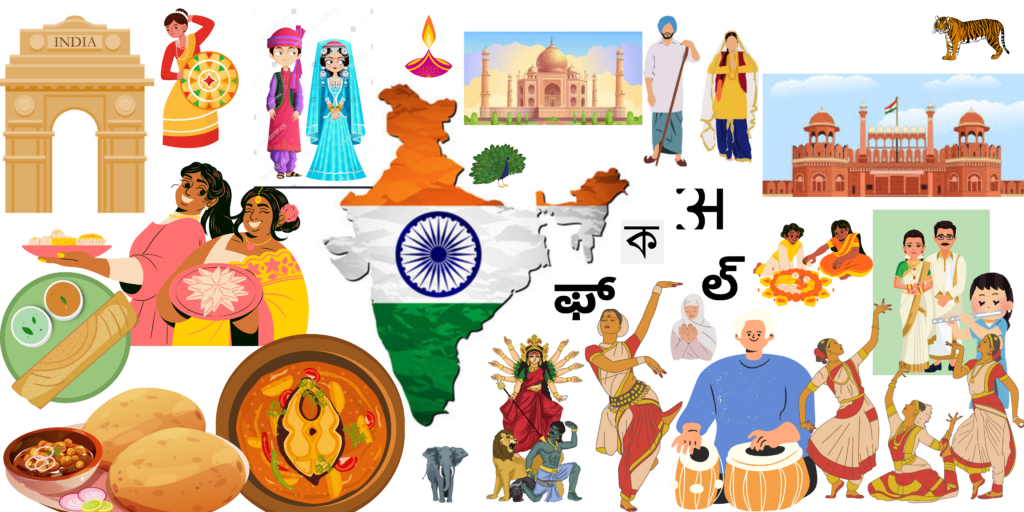Concept of Ancient Indian Clothing
Ancient Indian traditional clothing is a evidence to the country’s rich cultural heritage, historical diversity and the creativity of its people. Spanning thousands of years, the evolution of Indian clothing reflects the social, economic, and artistic developments that shaped the subcontinent.
According to archaeological evidence, the traditional clothing of India dates back to the period of the Indus Valley Civilization (c. 3300–1300 BCE). The inhabitants of this ancient civilization were laid the among the first to cultivate cotton.
As India moved into the Vedic period (c. 1500–500 BCE), the influence of religious and cultural texts such as the Vedas began to appear on the clothing of the people.
The Maurya and Gupta periods (c. 322 BCE–550 CE) marked a significant advancement in textile production and cotton, silk, and muslin became widespread, and intricate designs and patterns were introduced. The Gupta era, often considered the Golden Age of India, saw the rise of luxurious garments and elaborate draping styles, influenced by the flourishing arts and culture.
Clothing of Ancient India by Periods
Ancient Indian clothing varied significantly across different periods and regions, influenced by the climate, geography, cultural practices, and the materials available. Here’s an overview of some key periods and the typical clothing associated with each:
Indus Valley Civilization (c. 3300–1300 BCE) Fashion
In the indus valley civilization, cotton was commonly used to making clothing.The men wore a large piece of cloth from the waist to the leg (dhoti) and draped on turbans on their heads. Women wore knee-length skirts and draped garments. Also wore bangles, necklaces, earrings anklets, rings etc. made from silver, copper, gold and stones like turquoise, quartz etc. Men also loved to adorn themselves with jewellery .
Vedic Fashion(c. 1500–500 BCE)
During the Vedic period, women wore Saris, which were unstitched lengths of cloth that were draped in various styles. They also wore blouses (cholis) and Pravana ( garment worn underneath during the cold seasons). They also wore jewellery such as Gold and silver jewelry .The men wore Simple garments such as dhotis, and occasionally upper garments like shawls or cloaks and headgear like turbans and veils, and sometimes upper body garments like Angavastra (a type of stole). Both men’s and women’s clothing were made of cotton and wool.
Maurya and Gupta Fashion (c. 322 BCE–550 CE)
In this era, peoples wore stitched clothes. Women mostly wore a sari which was a long piece of cloth that women wrapped around their body. Later, choli was introduced which is a blouse that covers a woman’s upper body. Women adorn their hair with jeweled hair bands, ringlets or chaplets of flowers or pearls. Weaving and embroidery became well known during this period. Sarees or sari and muslin cloth covered with gold or pearls were worn by the rich and wealthy of the society.
Kings wore a blue block printed antiria made of closely woven silk. Antiria was wrapped around men’s hips and between their legs. Then it flowed from the waist to the ankles.During this era, men had beautiful long curly hair which they adorned with headgear.
The nobility and courtiers had their own special clothing which was the long sleeved brocaded tunic.
Medieval Fashion(c. 600–1600 CE)
The Medieval Fashion period, People wore cotton, silk and woolen clothes. During this period brocade and embroidered clothing became very popular. Men wore kurtas and jackets (angarkha) on top and dhoti on the bottom. In the later part of this period, trousers (pajamas) and turbans became common under Persian influence. The sari remained prevalent as women’s clothing. Blouses became more ornate, and additional garments such as the lehenga (a type of long skirt) and the ghagra (a similar garment) were also worn by women. Highly ornate jewelery made of gold, silver, precious stones and pearls was worn by women. The use of henna (henna) for body art became popular.
Mughal Fashion (c. 1526–1857 CE)
During the Mughal period, clothing with rich fabrics like silk, velvet, and brocade, elaborate embroidery and embellishments were in vogue.Women wore heavily embroidered saris, lehengas, and ghagras with cholis. The salwar kameez (a tunic and trousers set) also became popular.They also wore lavish jewelry, including items like jhumkas (earrings), maang tikka (head jewelry), nose rings, bangles, and anklets. Fabrics were often decorated with zardozi (metal thread embroidery) and other intricate techniquesThe men wore Jama (a type of long coat), churidar (tight-fitting trousers), and elaborate turbans. The angarkha and sherwani (a formal coat) were also worn. King Akbar loved to wear this type of clothing.
Each period brought its unique influences and innovations, contributing to the rich tapestry of Indian clothing traditions.

